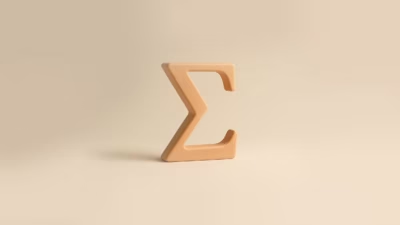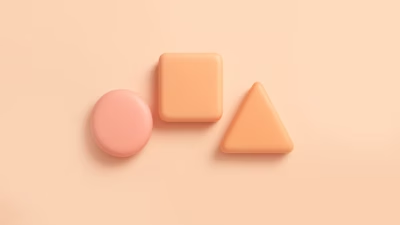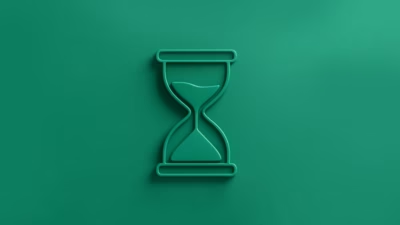When I first heard the term “data science,” I pictured something wildly complicated—think chalkboards crammed with math formulas, and a bunch of PhDs muttering about “Bayesian priors” over cold coffee. Honestly, it sounded more intimidating than inviting.
But here’s the plot twist: when I finally dug into data science, it wasn’t some secret, inaccessible world. It was messy, practical, fascinating—and way more human than I expected. If you’re standing at the edge, wondering if data science could be your thing, let’s walk through it together. I’ll break it down like we’re just chatting at a coffee shop, minus the overpriced muffins.
Why Data Science Feels Like Magic (But Isn’t)
Imagine you’re running a bakery. Every day you notice patterns: Tuesdays are slow, chocolate croissants sell out before noon, and rainy days bring more customers. You’re already spotting trends, making predictions, and adjusting based on data—you just might not be running a regression analysis on it yet.
That’s the heart of data science: finding patterns in messy information, making predictions, and helping people make better decisions. It’s just that, instead of eyeballing croissant sales, you might be crunching thousands (or millions) of data points using computers.
Officially, data science sits at the intersection of three skills:
- Math & Stats: How do we find patterns, model uncertainty, and make predictions?
- Programming: How do we wrangle messy data and automate analysis?
- Domain Knowledge: How do we actually understand the business, health, sports, finance (insert your interest here) world we’re analyzing?
You don’t have to be a master at all three to get started. Heck, I still Google statistical formulas more often than I’d like to admit. You just need enough curiosity to keep pulling on threads.
Quick tip: If you love solving puzzles, spotting weird trends, or arguing over which pizza toppings are objectively the best (pineapple, obviously), you’ll probably love data science.
What a Data Scientist Actually Does (Spoiler: It’s Not Just Coding)
Okay, picture this:
You’re handed a massive dataset—maybe it’s customer purchases, maybe it’s TikTok engagement stats, maybe it’s hospital admission records. It’s a chaotic mess of numbers, typos, weird date formats, and missing values. What now?
Here’s the typical (messy, non-linear) journey:
- Understanding the Problem: You don’t just dive into data. You ask, What are we trying to figure out? Maybe it’s “Which products are likely to sell out next month?”
- Wrangling the Data: Think of it like prepping ingredients before cooking. You clean, reshape, combine, and sometimes cry over weird outliers.
- Exploring Patterns: You poke around: charts, correlations, group averages. Like a detective looking for clues.
- Building Models: This is where machine learning can come in—using past data to predict future events.
- Communicating Results: You don’t throw a 50-page PDF at your boss. You build a clean dashboard, or a quick story: “Here’s what we found, and here’s what we should do next.”
In reality, most data scientists spend way more time cleaning and exploring data than building fancy machine learning models. Those missing values? Like guests who RSVP’d but never showed.
Quick tip: If you’re impatient with messy details, don’t stress—you’ll get faster. But learning to love cleaning data (or at least tolerate it) is a superpower.
The Tools You’ll Use: Yes, You’ll Learn to Code (But It’s Less Scary Than It Sounds)
Let’s rip off the Band-Aid: Yes, you need to learn some programming.
But no, you don’t need to be a wizard.
Most beginner-friendly data science happens with two languages:
- Python: Hands down, the most popular. Tons of libraries like Pandas, scikit-learn, and matplotlib make data science easier than it looks.
- R: A bit more statistical in vibe, but great for data exploration and academic research.
You’ll also bump into tools like:
- SQL: For getting data out of databases. It’s like ordering data off a menu.
- Tableau or Power BI: For building gorgeous dashboards without coding from scratch.
- Jupyter Notebooks: Like an interactive diary where you code, document, and chart all in one place.
My first Jupyter Notebook was mostly errors and typos. I still saved it like it was a precious artifact. Learning this stuff isn’t about being perfect—it’s about being stubborn enough to keep googling until it works.
Quick tip: Start small. Don’t try to build a neural network on day one. Clean a small dataset. Make a basic scatterplot. Celebrate weird little wins.
What Background Do You Need? (Spoiler: You’re Probably More Ready Than You Think)
You might be thinking:
“But I didn’t major in computer science. Am I doomed?”
Short answer? Nope.
I’ve met incredible data scientists who started as:
- Journalists (killer storytelling skills)
- Teachers (crazy good at breaking down problems)
- Accountants (attention to detail, baby)
- Even baristas (high EQ and pattern recognition!)
Yes, having a math, engineering, or comp sci background can help. But curiosity, grit, and communication skills matter even more. The tech stuff? You can learn it. Slowly, awkwardly, imperfectly. That’s how everybody does.
Quick tip: Think about the strengths you already have. Good at noticing patterns? Teaching? Explaining things simply? That’s gold in this field.
How to Actually Start: Real, Non-Overwhelming Steps
Here’s something I wish someone told me early on: You don’t need a master’s degree to break into data science.
(Unless you want one. Or love student loans.) Many successful data scientists come from diverse backgrounds and have gained their skills through online courses, bootcamps, or self-study. In fact, becoming a freelance data scientist can provide you with hands-on experience and the flexibility to work on various projects without the need for a formal degree. Embrace the resources available to you and focus on building a strong portfolio to showcase your capabilities.
You do need real skills. But you can build them project by project.
Here’s a simple roadmap:
- Learn Python basics: Variables, loops, functions. YouTube and freeCodeCamp are your friends.
- Pick a simple project: Maybe scrape movie ratings. Analyze your Spotify playlists. Anything that sounds fun.
- Explore small datasets: Kaggle.com is packed with beginner datasets. Try Titanic survival, house prices, etc.
- Build a portfolio: Every tiny project you finish? Post it. Blog about it. GitHub it.
- Stay stubborn: You will hit walls. You will google “TypeError: float object is not iterable” 400 times. That’s normal.
One of my first projects was predicting which cats at a shelter would get adopted fastest based on their profiles. Was it statistically rigorous? Eh, not really. Was it fun and motivating? Absolutely.
Quick tip: Make projects that you want to talk about at interviews. Nobody gets excited hearing about yet another stock price prediction model.
The Bottom Line: You’re More Ready Than You Realize
If you’ve read this far, you already have something a lot of people don’t: genuine curiosity.
That’s half the battle. The other half? Rolling up your sleeves and getting a little uncomfortable.
Data science isn’t about being the smartest person in the room. It’s about being the most curious, the most willing to test weird ideas, the most relentless about making sense of messy data.
One last thing: you’re not “late” to this field.
Sure, data science has been buzzing for a while. But the demand for people who can think critically about data—not just build complicated models—is only growing. Companies are drowning in data. They’re desperate for people who can make sense of it.
That could absolutely be you.
TL;DR:
Data science is about finding patterns, telling stories, and making smarter decisions using data. You don’t need a math PhD—just curiosity, a willingness to learn a bit of code, and the guts to tackle messy problems. Start small, stay stubborn, and remember: every great data scientist once googled “what is a dataframe” too.





